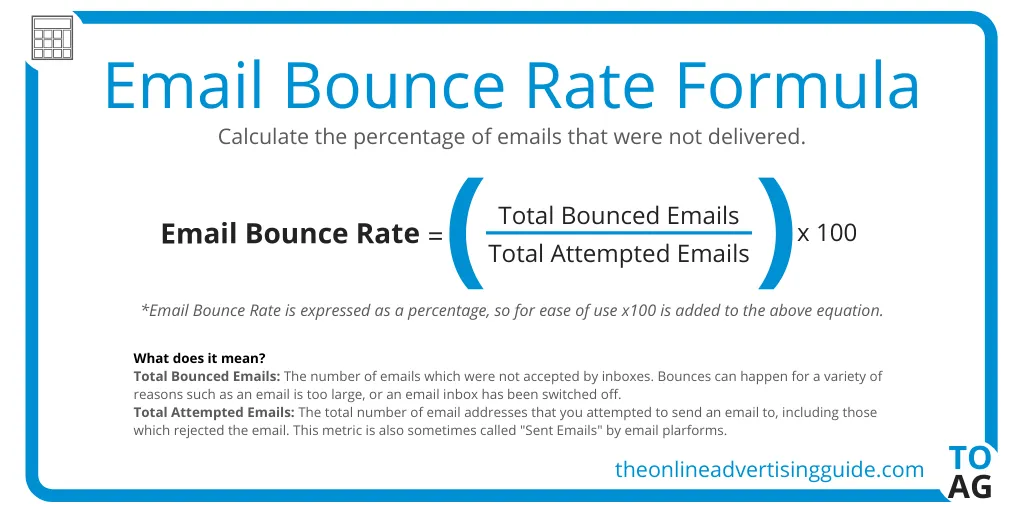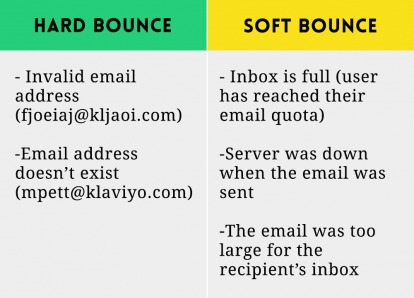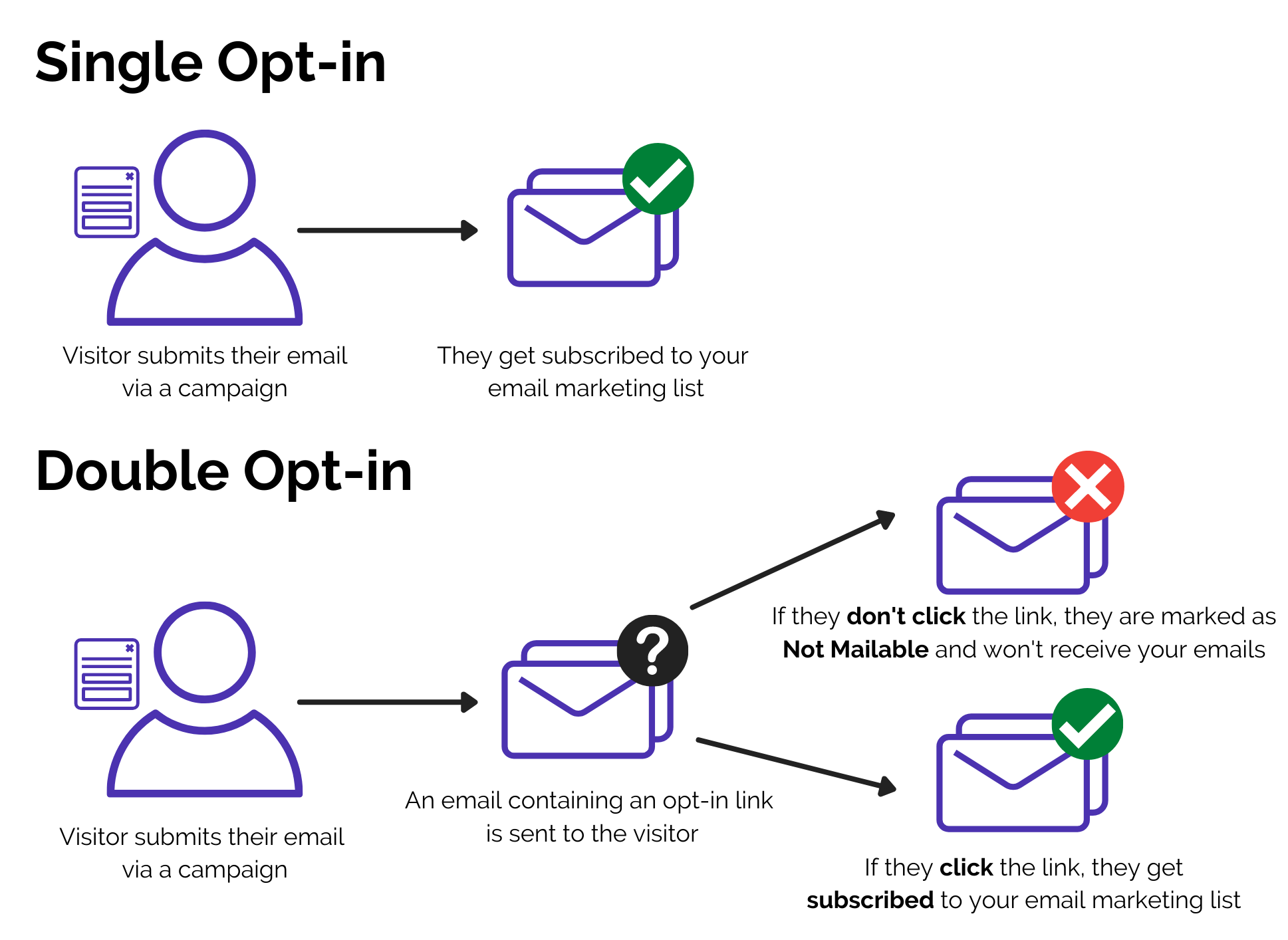You’ve crafted the perfect email for your list of recipients. You hit send and feel proud of your work. You gladly watch the open rate slowly tick up.
That is until you notice all the emails that never received your message. As the email bounces keep counting up, you wonder what you could be doing differently.
Error: The resource attribute is invalid.
If you regularly send mass email marketing campaigns, you are likely familiar with this situation. Email bounce backs are a consistent reality in the world of email marketing. However, it isn’t something that you are stuck with forever. With a little insight and a few good strategies, you can cut down your email bounce rate significantly.
バウンスメールとは?
これを読んでいるあなたは、「メールのバウンス」という言葉をよく知っていると思います。それにもかかわらず、明確な定義から始めることは有用です。これは、何らかの理由で受信者のサーバーによって拒否されたメールのことです(これについては以下で詳しく説明します)。サーバーがメールをバウンスして戻ってきたときには、なぜ拒否されたのかを理解するのに役立つコードも送信されます。
The process of email bounce backs
メール配信の終盤に発生する プロセス .メールを送信するときは、必ずこのような手順で行われます。
1.メールを書いて「宛先」欄に記入します。多くの受信者へのメールの場合は、連絡先リストから自動的に行うような感じです。
2.送信を押すと、シンプルなメール転送プロトコルサーバーはそれを配信するためにキューに入れます。
3.SMTPサーバーは、”@”の後のドメイン名を見て、メールを送るべきサーバーを探します。そして、ドメインネームサーバー(デジタルアドレス帳)を調べ、その中にある IPアドレス そのサーバーの
4.メール転送エージェントを使用して、SMTPサーバーが受信者サーバーにメールを送信します。
5.メールが正常に配信されると、受信者サーバーは受信者の受信箱にメールを表示します。配信されなかった場合は、サーバーはエラーコードでメールをバウンスします。
Why should you care about email bounce rate?
あなたは、バウンス率はそれほど大きな問題ではないと思うかもしれません。結局のところ、バウンス率よりも、メールがいつ開封されたかの方が重要なのではないでしょうか?いいえ、メールのバウンス率が重要なのは、今後のメールの配信性や評判に影響するからです。

バウンス率が高い方は ブラックリスト入り by recipient servers (subsequently increasing your bounce rate even more). Furthermore, your messages are more likely to be labeled as spam if you have a low reputation due to email bounces.
Plus, spending time working on your bounce rate will help you be more thoughtful about who you are sending your emails to. Chances are you will also improve your open rate as you クリーンアップ メーリングリスト
メールのバウンスの種類
As mentioned above, emails bounce for several different reasons – we call them hard and soft bounces. They can be broadly categorized as two types of bounce: soft bounce emails and hard bounce emails. The former type is temporary or easily fixable whereas the latter is (nearly) permanent.
ソフトバウンスメールエラーが発生した場合、SMTPサーバはメッセージを再送しようとすることがあります。

Soft bounces and why they happen
メールが大きすぎる。 Your email is larger than the recipient server will accept. This is not as common these days but these email bouncebacks sometimes happen. It is most common with image-heavy designs. One or two such bounces may not be an issue or error message. However, if you have many soft bounces, you likely need to work on your email optimization and make your email body easier to read and open.
到達不可能なサーバー。 The recipient server may be down or overloaded. Typically, resending the email will resolve this if this is a temporary issue on the recipient’s side. If you get this error repeatedly for the email address, it is likely a more permanent problem.
メールボックスがいっぱいです。 Unsurprisingly, this means that the recipient’s inbox is full and cannot accept additional email messages. Again, this is much less common with modern email systems. However, it can still happen. In most cases, your SMTP mail server will retry periodically until the message is accepted – or return an SMTP error message.
休暇の返信。 Depending on the configuration of the recipient server, you may receive an email bounce back if the recipient has an auto-reply or “out of office.” In other cases, the system may simply reply RE: the message bounced.
上記の問題は、通常、時間をかけて修正するか、軽微な変更を加えるかのいずれかで修正されます。しかし、ハードバウンスメールのエラーが発生した場合、物事を修正するのは少し難しいかもしれません。
Hard bounces and why they happen
メールアドレスが悪い。 One of the most common reasons for a bounce is that the email you are trying to send to doesn’t exist. This could be because you were provided with a fake email address. It could also be because the email used to exist but has since been removed. In some cases, it may simply be a typographical error. Most email fields don’t have spellcheck so invalid addresses can easily end up on your list.
メールがブロックされました。 お客様のメールアドレスが、メールサーバーによってブロックされている可能性があります。これは、非常に厳密な 迷惑メール設定、または受信者があなたをブロックしている場合 .前者の場合、ホワイトリストに登録するよう依頼することができます。後者の場合、あなたは運が悪いかもしれません(さらに、受信者はおそらくあなたからの連絡を望んでいないでしょう)。
ブラックリストに登録されています。 また、メールサービスプロバイダーは、特定の送信者をブラックリストに載せています。これは、受信者サーバーの ブロックリスト but happens earlier in the process. It may be caused by spam complaints, high bounce rates, certain types of relevant コンテンツ , or a sudden increase in sending activity that your email providers spot.
These types of email bounces are more challenging to deal with because they won’t be resolved simply by resending the email. In some cases, you may need to simply purge the recipient. In other cases, you may be able to improve your email reputation.
メールのバウンス率を下げるための戦略
Keeping your bounce rate low should be one of your main concerns as an email marketer. Luckily, there is a precise set of strategies you can employ to ensure your bounce rate stays low, for both soft and hard bounces.
Clean up your mailing list and keep it clean
This is valuable for more reasons than just cutting down on bounces. It will also help you home in on the contact information of leads that are genuinely interested in your products and services. Spending more of your time on selling to likely prospects is always a good thing. You’ll also be able to improve your email marketing metrics for future campaigns, such as your deliverability rate, open rate, and ultimately conversion rate.
Generate your mailing lists from a form that asks permission for receiving messages
If you are doing business in the European Union, you may be legally required to do this anyway. While it is tempting to build a huge list, by asking people to opt in, you are narrowing down your list to the people who want to hear from you.
Sending content to people who are uninterested is likely rolling a boulder up a mountain.
Consider having a double opt-in email process
This is when you verify that you have the correct email by sending an email with a subscription link. While this is not the right approach for every business, it will eliminate the possibility of typos in emails.

Sending regular (but not spammy) emails helps improve your email reputation
Obviously, you should not be sending emails just for the sake of sending them. However, you can benefit from regularly providing value to your recipients. This will reduce your bounce rate, increase engagement and help you avoid spam filters.
Keep your bounce rate low by avoiding sounding like a spammer
Make sure your emails are well-written and professional. Avoid sending spammy subject lines, and never hide any content in your email HTML.
メーリングリストの掃除
メールの直帰率を改善するための最も重要な方法の1つは、あなたの メーリングリストクリーン .ハードバウンスを受けたら、すぐにそのメールアドレスをリストから削除する必要があります。ただし、厳格なスパムフィルタによってブロックされた受信者が、あなたのメールをホワイトリストに登録する可能性がある場合は、この限りではありません。 領域 .この場合、他の手段で受取人に連絡し、承認してもらうことも可能です。
そうでなければ、メールのバウンスがあなたの評判を汚すことを避けるために、メーリングリストをクリーンに保つ必要があります。いくつかはほぼ避けられないし、全く問題ありませんが、一貫した問題があると、より多くのブラックリスト化やブロックが発生します。
As mentioned, one of the simplest ways to do this is to remove any emails that cause hard bounces, however, it is not recommended to wait until your email bounce backs. A safer approach for your email sender reputation is to verify the emails in your list prior the send out, with an メールチェッカ を確認し、未配達かどうかを確認する。 危険 のアドレスを入力してください。
Low-quality email addresses in your mailing list are likely doing significantly more harm than good. You will have much more success with a shorter but more focused list than a long and messy one.
バウンサーでメールの評判を守る
あなたの メールの評判 . If you want to keep a low bounce backs rate and increase your open rate, you need to have a good reputation. Fortunately, you don’t have to manage it alone.
Using our メールチェッカ , you can keep your mailing lists clean and optimized for a minimal bounce rate and maximum 婚約 .
Our system is simple to use and highly effective with over 99.5% accuracy in mailing list management. If you want to improve the impact of your email marketing, learn more about バウンサーがお客様に愛される理由 .今すぐメーリングリストの検証を始めましょう。
Email bounce backs: frequently asked questions
Whatare email bounce backs?
An email bounce occurs when an email message is returned to the sender, either because it was undeliverable or because it was rejected by the recipient’s email server. Delivery status notification (DSN) messages provide more detailed information about the cause of a bounced email.
Why are bounced emails important?
Bounced emails can negatively impact your organization’s reputation, resulting in lower delivery rates and higher costs associated with maintaining clean mailing lists. Additionally, if left unchecked, bounce message emails can result in your email deliverability rate suffering.
ソフトバウンスとハードバウンスの違いは何ですか?
A soft bounce means that the recipient’s email server temporarily rejected the email (so the email bounced), while a hard bounce occurs when the email is permanently rejected by the recipient’s email server.
Why do email bounces happen?
Email bounces can happen for a variety of reasons, including invalid email addresses, full mailboxes, technical issues with the recipient’s email server, or spam filters blocking the email. Bounce rates might vary as well depending on the intended recipient.
How can I reduce my email bounce rate?
To reduce your email bounce rate, you can regularly clean your email list, use double opt-in, remove inactive subscribers, and monitor your sender reputation for email campaigns.
What should I do if my email bounces?
If your email bounces, you should first check the bounce reason to determine the cause – there are various types of email bounces. Then, you can take steps to address the issue, such as correcting the recipient’s server or email account, contacting their email service provider, or modifying your email program to comply with spam regulations.

